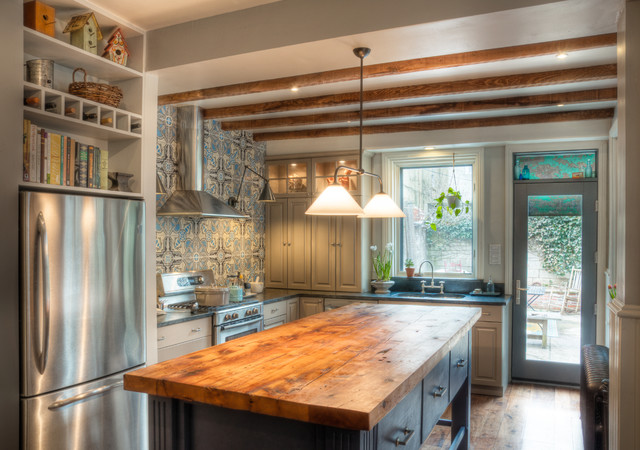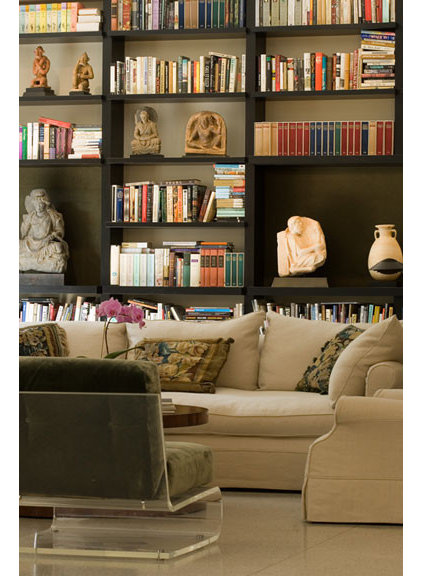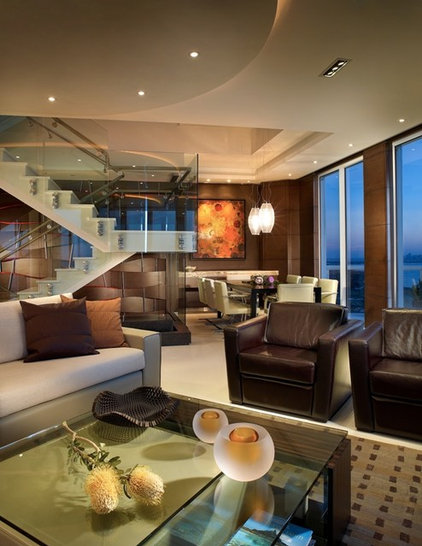Thursday 11 September 2014
Wednesday 31 July 2013
Tips for your next kitchen makeover
You've decided to remodel your kitchen. Now what? Not knowing where to start, many home-owners fall into two camps. Some start by looking at appliances. Others start by collecting inspiring kitchen photos. Some decide they need more room. Others simply want to upgrade their current kitchen. Home owners may find themselves in this exploration stage for a year or longer before they start interviewing kitchen designers or general contractors.
Once you've pondered long enough and you're ready to green-light a kitchen remodelling project, then what? We'll start with the first 9 steps and we'll get into the nitty-gritty details under specific steps as we move through the complete workbook.
Once you've pondered long enough and you're ready to green-light a kitchen remodelling project, then what? We'll start with the first 9 steps and we'll get into the nitty-gritty details under specific steps as we move through the complete workbook.
Step 1: Think about what you need
This step is all about how you use your kitchen, and finding the layout and features that fit your household's lifestyle. Get ideas from every resource possible, including websites, showrooms, books, magazines and blogs.
Think about your priorities: how many people will be cooking and gathering here, and how they'll need to move around in it. Do you need an addition? Or can you work with your existing kitchen footprint?
If you haven't already, start saving photos of kitchens with features that suit your style. Your collection can be organized and beautiful like a scrapbook or it can be filled with random, unorganized images. I actually prefer the latter, because I like to randomly stuff images into my folders and idea books and go back to them later on for edits.
This step is all about how you use your kitchen, and finding the layout and features that fit your household's lifestyle. Get ideas from every resource possible, including websites, showrooms, books, magazines and blogs.
Think about your priorities: how many people will be cooking and gathering here, and how they'll need to move around in it. Do you need an addition? Or can you work with your existing kitchen footprint?
If you haven't already, start saving photos of kitchens with features that suit your style. Your collection can be organized and beautiful like a scrapbook or it can be filled with random, unorganized images. I actually prefer the latter, because I like to randomly stuff images into my folders and idea books and go back to them later on for edits.
Step 2: Research and plan
Ready to green-light that project and take the plunge? The best place to start is by formulating what's commonly referred to as a scope of work and figuring out your preliminary budget. Both of these may be subject to change, so don't feel like you have only once chance at this. Budget and scope are intertwined and often change many times during the design process as you become more educated and able to reconcile what you want and what you can afford. As a home owner, you're not expected to walk into this knowing what everything should cost. Remember, this is an educational process. Step 3: Find the professionals you will need Even if you're going the DIY route, unless you're building your own kitchen cabinets and doing your own electrical and plumbing, you're going to have to work with a professional at some point. It may be as brief as leaning on your salesperson to help you in selecting and ordering your appliances or cabinets, but it's something to plan on either way. Some people start by visiting big-box stores or cabinet showrooms where they can see everything. Many home owners get referrals from friends or colleagues and start by hiring an architect or designer. Still others might work on their own with a builder or contractor. Pros are available to help you with everything from contracts and permits to space planning, budgets, choosing finishes and fixtures, shopping, ordering products, helping you set up a temporary kitchen, and managing your project from start to finish. |
Step 4: Schematic design
This phase includes sketches, space planning, preliminary floor plans and elevations showing the layout and cabinet sizes. I try to keep my clients focused more on layout and space planning, even though the temptation is to talk about what the kitchen will look like. But I find that getting caught up in the look too early can distract from the space planning phase. Plus, you need a plan in order to figure out what materials will go where, and how many square feet you will need, and ultimately how much this will cost. I like to begin the contractor interview process early and give them a preliminary drawing packet and scope of work so we can get some ballpark construction numbers. At the same time you can be sending out drawings for estimates on some top choices of finishes and fixtures. Step 5: Fixture and finish specification Throughout this process, and probably long before, you have been saving photos of kitchens you love into your idea books and folders. You've found your style, whether it's modern, classic, traditional, cottage or a personal style in between. You probably know if you want a white kitchen, a natural wood kitchen, or some colour. Now you need to make your final selection of finishes and fixtures. This usually includes:
|
Step 6: Work on design development and construction documents
This is the stage when you finalize the design and prepare final floor plans, elevations, details and, if applicable, mechanical and electrical drawings, lighting switch plans, and exterior elevations. This is where your final permit set or Construction Drawings (CDs) come into play. It's important to have finishes and fixtures selected at this time, since this is what will be considered in the final pricing from the contractor. You'll submit drawings for permits. These have a lead time, so check the timing with your local village. You'll need an architect, designer or licensed contractor signed up to finalize the paperwork and pick up your permits, so get ready to hire someone in the next step. I often find that we're submitting for permits around the same time or a little bit after we've placed the cabinet order, due to similar lead times. Step 7: Get contractor estimates If you don't already have a licensed contractor on your project, your next step is to find one to carry the project through. I always recommend to my clients to get at least 3 different contractor estimates. I like to do preliminary walk-throughs with the contractors once the schematic designs are done so we can get some ballpark estimates and find out if we're on the right track or need to pull back some to fit the budget. Step 8: Get ready for demo The big day is upon us, most likely something like 4-8 weeks from when you submitted for permits. Time to get that schedule firmed up and plan on cleaning out the cabinets, putting what you don't need in storage and — if you're living in the house during construction — setting up a temporary kitchen so you don't lose your mind! You may be moving out of your house temporarily, but most home owners white-knuckle it and try to live in the house through construction. Preparation and organization can save your sanity. Discuss the logistics ahead of time with your contractor. Will you meet once a week for updates? Will you have to be out of the house for certain tasks like demo or flooring? What about debris removal and dust? Are there any family allergy issues? What is a typical work day for the crew? Getting all this on the table beforehand can set expectations and make for a smoother ride. Step 9: Surviving the dreaded punch list Once construction is over, well ... almost over ... there's always this annoying little list of items that are missing, wrong, or simply forgotten about. A missing light switch plate, a caulk line that shrank and pulled away from the wall, paint touch ups — small things like this, and sometimes bigger things like the hood doesn't work, or there's a big scratch in the newly refinished floor. Sometimes the home owner does the punch list. It can be as informal as an emailed list of items that need to be fixed or finished. I like to use a little form I put together that identifies the item to be fixed or finished, the responsible party and the date of completion. I send it to the client for review, changes and additions, and then off to the contractor. It's inevitable that the contractor may have to make multiple visits back to the house to finish these items; prepare yourself for more than one visit and you'll be fine.The best way to approach this is with a Zen attitude. Things happen, little things get missed. It's sort of like making a list for the grocery store and still forgetting some key ingredient. We all do it.
*Please note: Article sourced from the USA (http://www.houzz.com/ideabooks/1198907/list/Homeowner-s-Workbook--How-to-Remodel-Your-Kitchen). The procedure for obtaining building rights from your local Municipality will differ slightly from those stated in step 6.
For guidance on what procedures to follow when making constructional changes to your home in South Africa, please contact one of our professional estate agents: http://remaxbay.co.za/meet-the-team/
|
Friday 26 July 2013
How to make your living room cosier
Cosy Contemporary Living Spaces
Here's How to Make Any Space Feel Warm and Inviting
Most of us want our homes to feel warm, inviting and comfortable to spend time in. What makes a space cosy? Is it the size of the room, the furniture arrangement, the fabrics, colons, lighting, or accessories? Let’s take a look at some cosy contemporary living rooms to see how they were done:
Any size space can be made to feel cosy. In this spacious room with high ceilings, several design elements visually lower the ceiling, making the room feel more intimate: a wall of warmly lit art pieces, suspended track lighting and window valences. Another way to deal with a large space is to create a second conversation area, like the one near the window.
|
Fabrics and textures really warm up a room. These long drapery panels add softness and insulation from the tall windows. The area rug and velvet throw pillows provide additional layers of comfort.
|
Clever lighting adds cosiness to this living room. The rock wall is a textural backdrop for candle light and an illuminated floor lamp. The fireplace adds visual and tactile warmth, and accent lights direct your attention to an interesting art piece.
|
These rows of books and art reveal the personality of the home-owner, adding familiarity and cosiness. Furniture is grouped together to encourage friendly conversation.
The colour palette of this room is rich and sophisticated. The reddish brown in the wood panelled fireplace, draperies and area rug warms up the purple grey.
|
In this contemporary open plan home, a cosy living area is defined by the furniture arrangement and the area rug. The chocolate brown walls make the space feel even cosier.
You might not think of blue grey as a cosy colour, but here it is balanced with soft coral and yellow accents. It works in this room with historical details: dramatic mouldings, wonderfully textured ceiling tiles, and an arched ornamental fireplace. Natural light and a greenery view come through the tall windows and are reflected in the mirror.
|
Step down into this warmly lit living room enclosed by low wood partitions and a creamy textured stone wall. Have a seat on the brown suede sofa and put your feet up. Now, isn't this cosy?
|
Subscribe to:
Posts (Atom)











